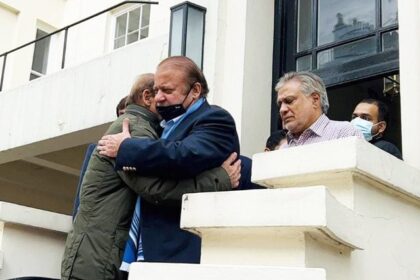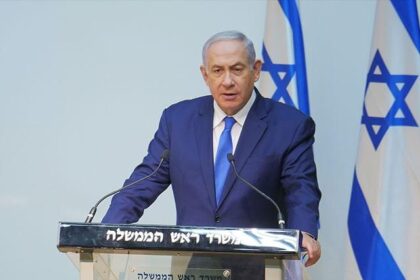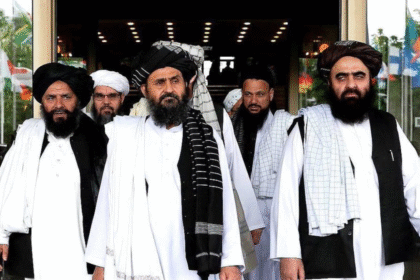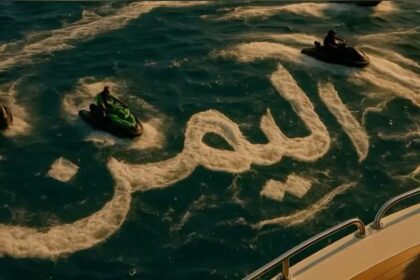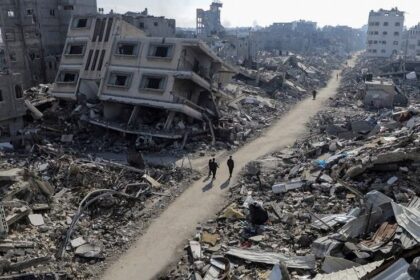Gaza’s Waters, Europe’s Conscience: Inside the Freedom Flotilla That Never Docked
The Madleen was a white sailboat floating silently across the Mediterranean, carrying banners of peace, boxes of rice, baby formula, and medical supplies. There were 12 volunteers on board, including Swedish climate activist Greta Thunberg and French-Palestinian MEP Rima Hassan. Their objective was to oppose the oppressive siege imposed by Israel—and tolerated by Europe—while simultaneously delivering symbolic humanitarian aid to Gaza.
On June 9, the boat was intercepted in international waters and dragged to the port of Ashdod, where Israeli naval officers physically boarded it. Although the Madleen never reached its destination, it sparked a global debate: Why does a small boat carrying food and medicine pose such a threat to powerful nations?
Resistance at Sea: A Legacy
The Gaza Freedom Flotilla began with bloodshed. In 2010, Israeli troops attacked the Mavi Marmara—part of a six-ship convoy in international waters—killing nine Turkish citizens and injuring several others. While the UN’s Palmer Report controversially upheld Israel’s blockade as lawful, it questioned the use of excessive force; a separate UN fact-finding team declared the operation unlawful and disproportionate.
Since then, flotillas—floating declarations that the isolation of Gaza must end—have developed into a form of protest at sea. They challenge the legality of a blockade that has imprisoned 2.2 million citizens of their own country and operate in zones where international law remains murky. According to UN experts like Richard Falk, it is illegal to deny humanitarian supplies to people under occupation.
The Campaign of 2024–2025: From Oslo to Ashdod
With the motto “For the Children of Gaza”, the Handala—a ship named after the popular Palestinian cartoon character created by Naji al-Ali—set sail from Oslo in May 2024. Coordinated by Ship to Gaza Norway and the Freedom Flotilla Coalition (FFC), it rallied support in over 25 European ports before its journey came to a halt in Malta. Political pressure, flag withdrawals, and bureaucratic delays ultimately brought it to a stop.
In June 2025, the Madleen departed from Catania, Sicily, carrying 12 volunteers and a small but significant load: nappies, water purification equipment, medical kits, 250 kg of rice, and 100 kg of wheat. Among the passengers were Rima Hassan, Greta Thunberg, Kurdish-German human rights activist Yasemin Acar, Al Jazeera journalist Omar Faiad, and Brazilian activist Thiago Ávila.
The ship was soon shadowed by a Hellenic Coast Guard aircraft and two Israeli drones. About 185 kilometres off the coast of Gaza, on June 9, Shayetet 13 commandos boarded the Madleen. According to activists, the crew were detained without due process, communications were cut, and personal devices were thrown overboard. The boarding was described as violent.
Israel claimed the travellers would be deported, fed, and kept safe. Thunberg and Spain’s Sergio Toribio agreed to return voluntarily. Others—most notably Hassan—resisted deportation and remained in custody, prompting French, Swedish, and Turkish consular interventions.
Who Gets on a Blockaded Boat: The Human Thread?
A diverse group of medical professionals, engineers, journalists, ecologists, and religious leaders—united by their commitment to humanitarianism and political disobedience—made up the passengers.
In a post-interception video, Greta Thunberg declared, “Silence is not neutrality. It’s complicity.”
French MEP Rima Hassan, a descendant of Palestinian refugees, has long denounced Western nations for their support of Israeli actions. Thiago Ávila, founder of Freedom Flotilla Brazil, brought 20 years of activism to the mission. Yasemin Acar, born into Kurdish exile, called out Europe’s double standards, stating:
“Bombing a hospital is a war crime. Our governments aren’t here, so we are.”
For French physician Baptiste André, the expedition was an act of medical duty—to stand by the besieged, even if only symbolically. Journalist Omar Faiad aimed to document what many major media outlets ignore.
They weren’t explorers. They saw it happen.
Blockade by Bureaucracy
The convoy’s interception was not solely Israel’s doing. Europe made a quieter but equally impactful contribution. Under pressure, the Madleen’s flag was withdrawn. Stopovers and refuelling were denied in Malta, Greece, and Turkey. The justifications—permits, safety, and regulatory requirements—were cloaked in bureaucratic neutrality.
But neutrality is political. While Gaza receives red tape, Ukraine gets urgent aid. This humanitarian double standard shows how Europe preserves the status quo—not through violence, but through convenient inaction. As one activist put it, “They didn’t need missiles.” Red tape was very effective.
Flotillas: Are They Still Important?
Some argue that the flotilla’s symbolic cargo—just a few hundred kilograms—has no real impact on the crisis in Gaza. But loudness was never the goal. Visibility was.
The flotilla demands moral accountability in a world where Gaza is typically ignored—unless bombs are falling. It serves as a reminder: silence is not diplomacy, and a siege is not peace.
Israel, however, often uses such incidents to claim there are humanitarian corridors—so long as they are under Israeli control. The seizure of the Madleen becomes a paradoxical PR moment: “aid is allowed, ”even as the blockade tightens.
What Sank, What Floated
There is no Madleen anymore. Its aid was seized. Its passengers were detained. But its message endures.
The boat was never expected to win. It was expected to be seen.
Some ships carry supplies. Some carry defiance. The Madleen raised a question that no government has yet answered:
If Europe won’t provide the gasoline that conscience demands, then who is actually enforcing the blockade?









